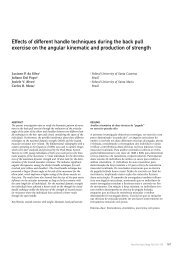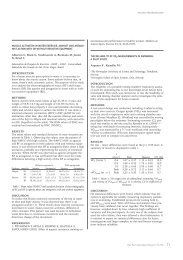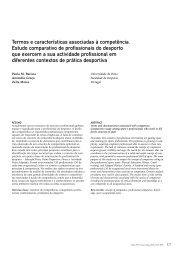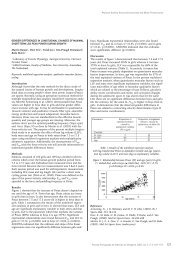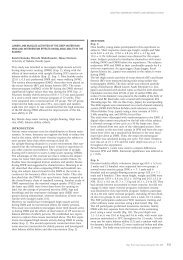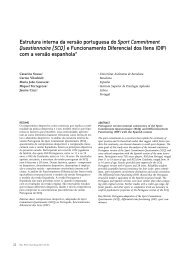Biomechanics
Biomechanics
Biomechanics
You also want an ePaper? Increase the reach of your titles
YUMPU automatically turns print PDFs into web optimized ePapers that Google loves.
Historical highlights<br />
The XIX th Century: the gait century<br />
Du Bois Reymond (1818-1922) and Duchene (1806-1875) – Laid the foundations of electromyography<br />
Refined the methods for measuring currents in 1841, and traced electricity in<br />
contracting muscle to its independent fibres<br />
Volkmann (1862) – Described the effects of pressure on bone growth<br />
In 1866 published Physiologie des Movements,<br />
which describe the function of every important<br />
superficial muscle<br />
Van Mayer (1867) – Described the relationship between the bone architecture and its function<br />
Historical highlights<br />
The XX th Century<br />
Characteristics of the XXth century that influenced the development of <strong>Biomechanics</strong>:<br />
Mechanical, industrial and technological development associated to two world wars<br />
Popular, social and financial recognition of Sport and human performance<br />
Explosion of financial support for medical and health care research<br />
Cochran & Stobbs (1968), from Bartlett (1997) Silveira et al. (2005), Radiol. Bras.<br />
Historical highlights<br />
The XIX th Century: the gait century<br />
- Measuring methods were developed to quantify kinematics and<br />
kinetics, and were extensively applied to human gait analysis<br />
- Measuring methods were developed to quantify electrical current<br />
during muscular activity<br />
- Engineering principles were applied to biological and<br />
biomechanical analysis<br />
Historical highlights<br />
The XIX th Century: the gait century<br />
Light-trace Photography<br />
Vilas-Boas (1994)



